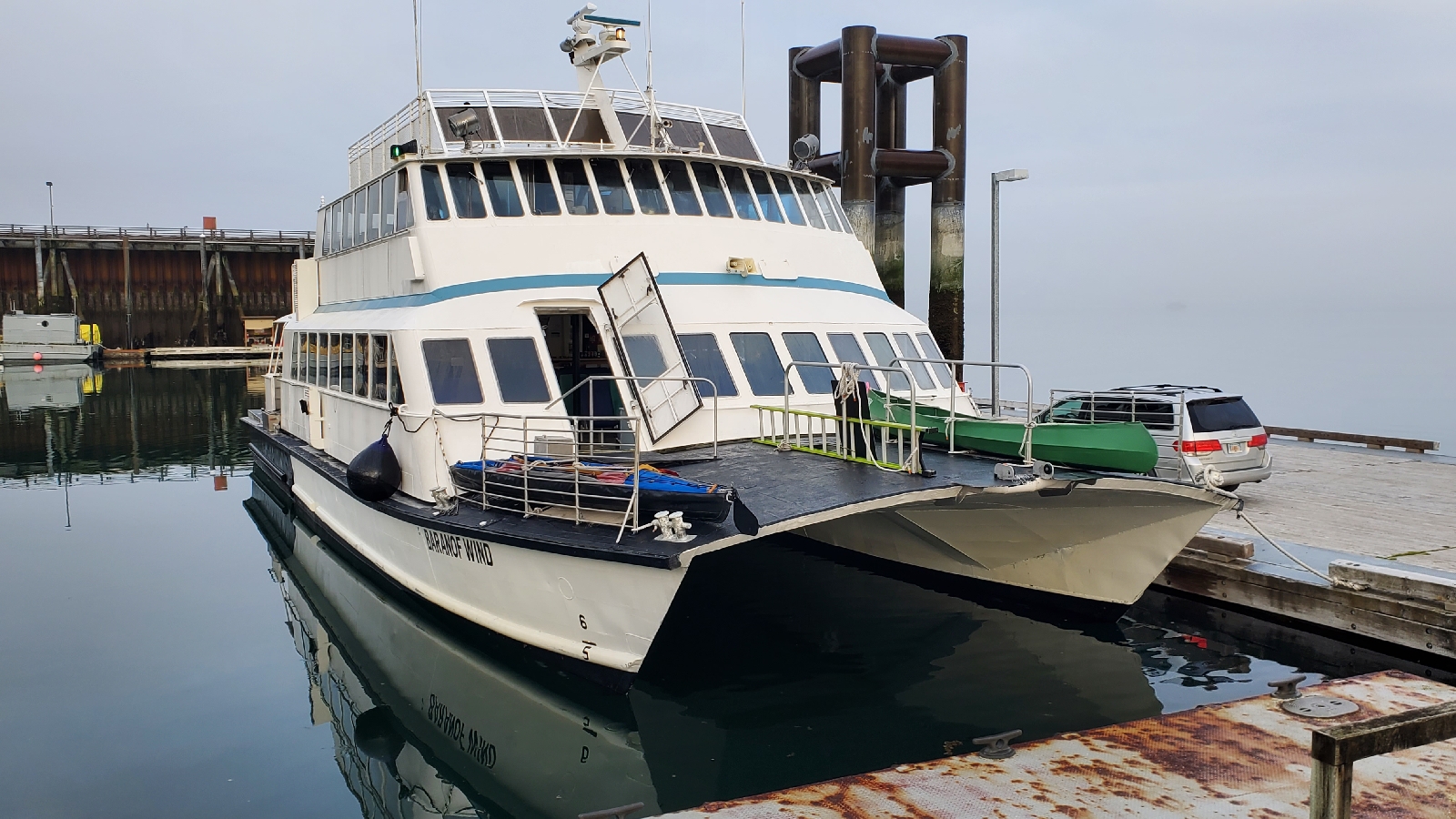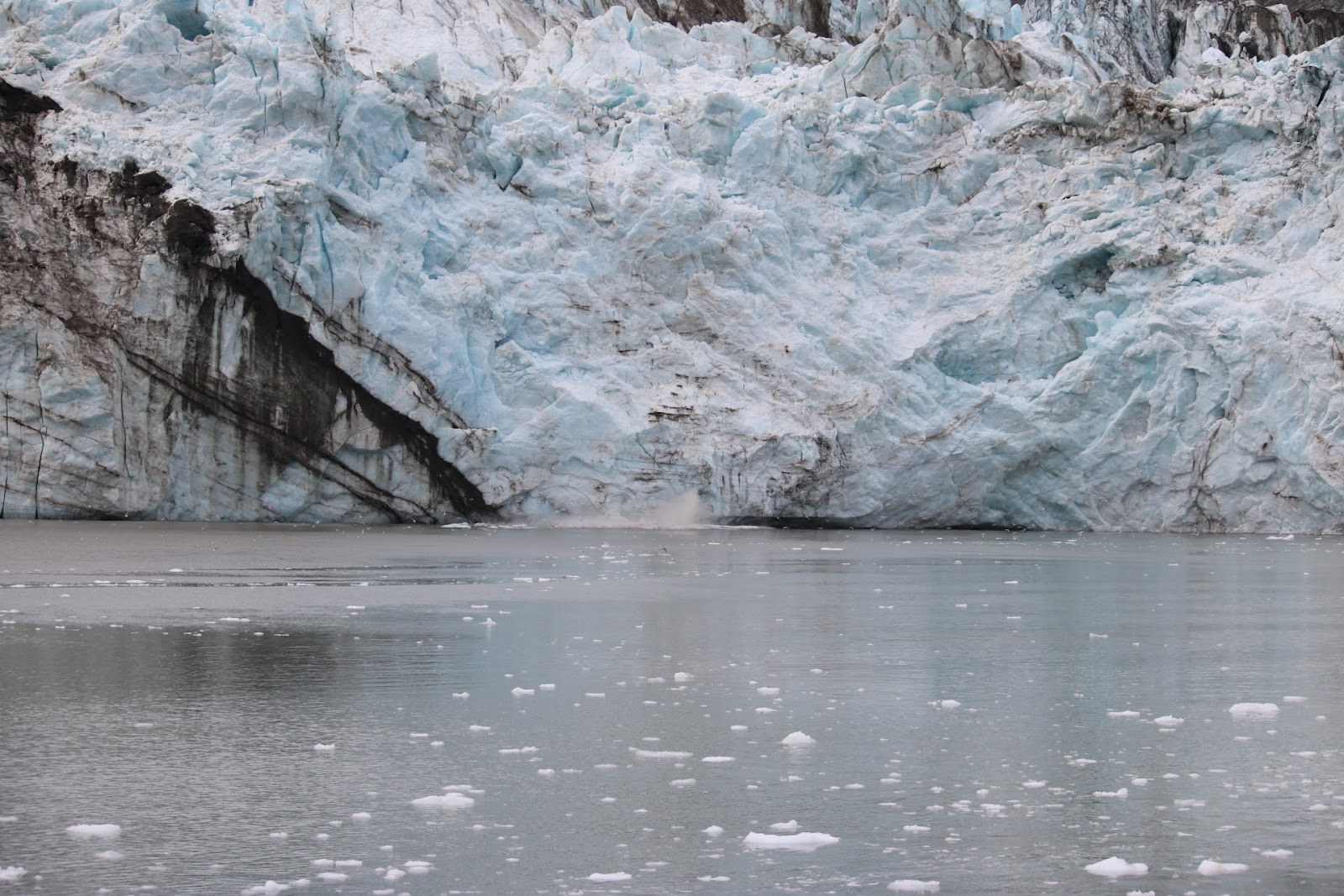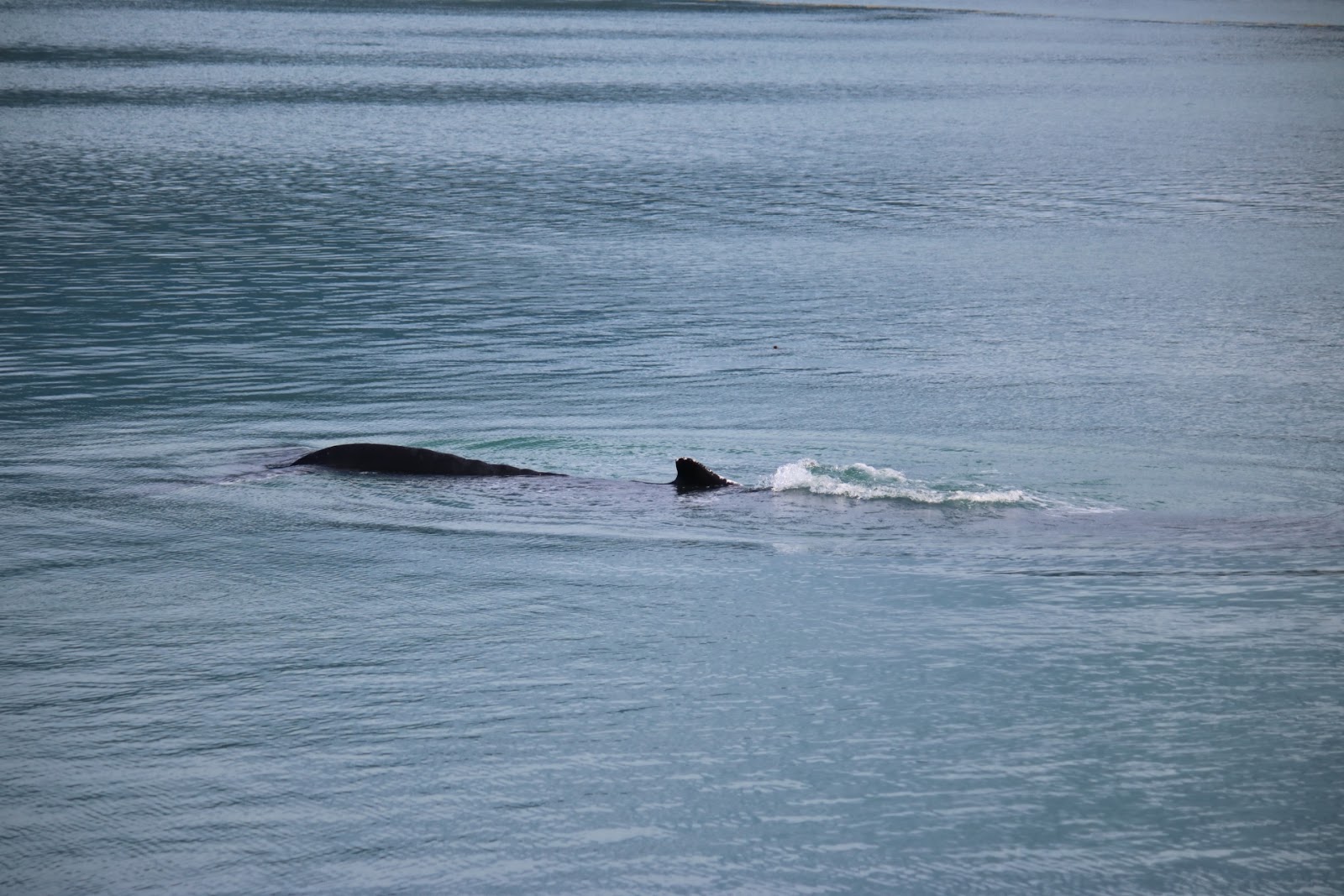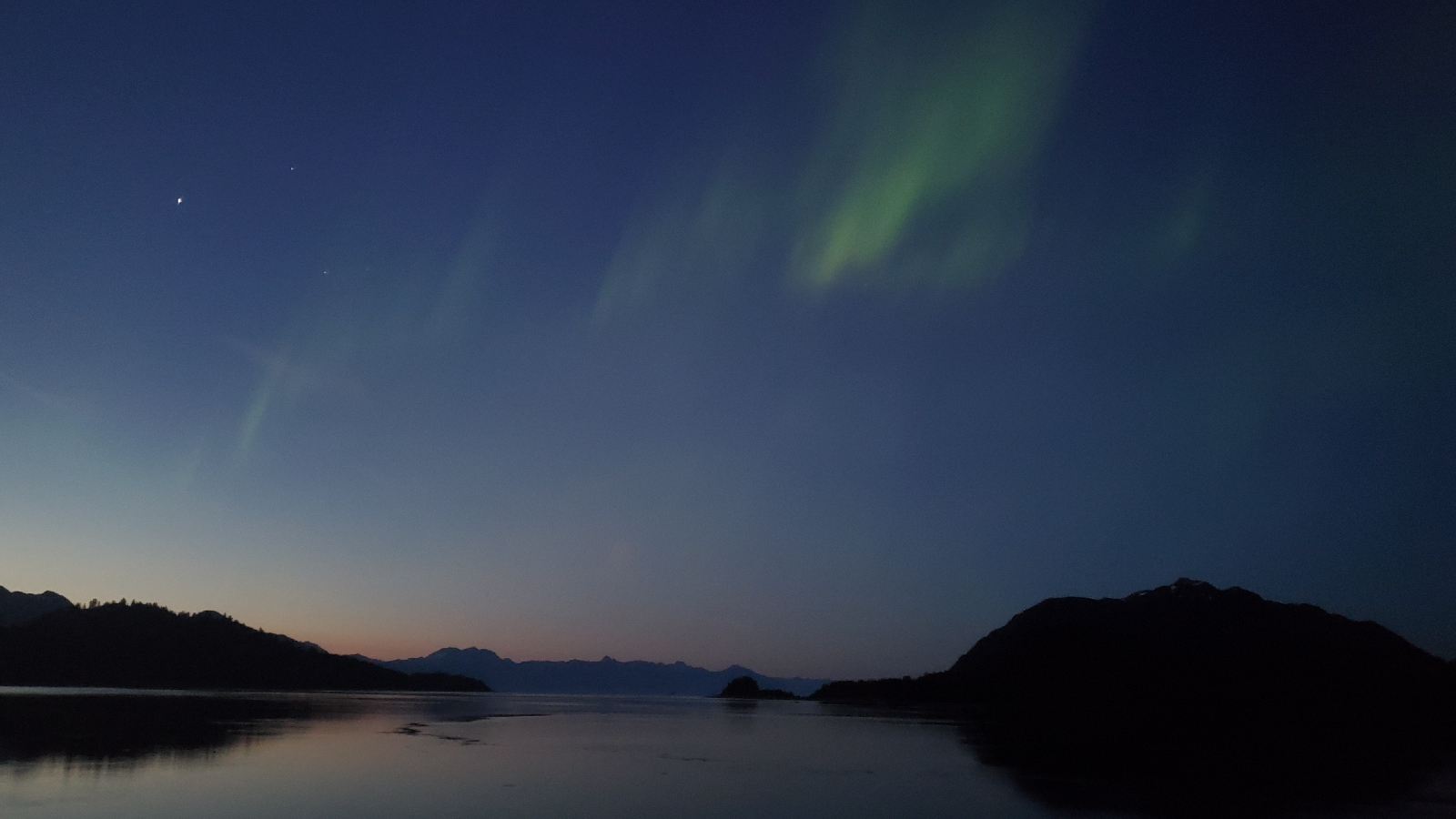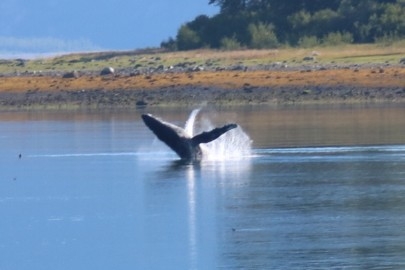Our Glacier Bay adventure began in Bartlett Cove. We set up our tent in a lush rainforest. With the cool and rainy weather, we put a tarp over our tent to enhance rain protection.
Fri. To access a more remote area, we loaded our kayak and gear aboard the Day Boat and enjoyed a tour of the bay's West Arm.
At South Marble Island, we saw sea lions and nesting seabirds.
In the Tidal Inlet, Captain Naomi located a mother brown bear and her cub feeding on mussels along the shore.
At Gloomy Knob, we spotted a nanny mountain goat and her kid hanging out on the rocks. I am pretty sure they saw us before we saw them.
Glacier Bay is home to over 1,040 glaciers, and most are shrinking or receding. The impressive Johns Hopkins is a tidewater glacier that calved a hunk of ice into the sea as we watched.
After the Day Boat dropped us off at Blue Mouse Cove, within minutes we were paddling with porposies, sea otters, seals, and two humpback whales. It was our first time paddling in such close proximity to humpbacks and we gave them due deference.
As we set up our tent above the high tide line on a mossy strawberry patch atop a granite overlook, several humpback whales were feeding in the inlet. One was just off the shore from us, about 50 feet away.
Another whale tail-slapped for 10 minutes. It was quite a display! After dinner, the whales continued feeding and making appearances for hours. Also, a few seals showed their curiosity by popping their heads above water near the shore. We could see whales through the door of our tent.
Sat. More whales, seals, otters, and porposies in the morning. A playful troupe of 7 sea lions joined them. A rufus hummingbird seemed drawn to our brightly colored clothes. A bald eagle flew to the island south of our site and stirred up a flock of gulls and kitiwakes. Crows cawed behind us frequently. After lunch we paddled 4 miles up Scidmore Bay during "slack" tide to collect water from a stream.
We passed a large raft of scoters at the north end of the bay. After purifying our water, we rested in the shade of some alders until we could paddle back to camp while the tide was receding. It felt like flying. Before bed, we heard a pack of wolves howling in the distance. At night, we got up and saw a faint auroa borealis just as the sun was starting to rise at 3:45 a.m.!
Sun. The day started with three whales tail-slapping to the east of us. Make a joyful noise to the Lord! More whales arrived, perhaps 8 total, including a mother and calf. Black-tailed Bumblebees abounded.
The kelp bed is exposed every 12 hours at low tide. Wolves were howling again. Oystercatchers seemed to whistle without breathing. We were amazed at the difference between high and low tide at our site. Receding tide reveals bare rocks at the highest level, rocks covered with barnacles and bladder plants at the mid level, and a bed of mussels at the lowest level showing at low tide. Our outhouse was anywhere in this intertidal zone. Natural flushing.
Mon. At low tide in the morning, we set out to replenish our water supply, and after a few paddle strokes, a whale surfaced 15 feet from our kayak. These gentle giants are completely hidden underwater until they reveal themselves. We never got used to how close to shore they could be. One of the bear safety practices at Glacier Bay is cooking and eating in the intertidal zone. More often than we can remember, a whale spouted not more than 30 feet from us. This intimacy with whales is startling and awesome. After a short 1 mile paddle to a water source, we hauled the kayak up the beach and were tempted to pump from a large pool of water, but we realized it was below the high tide mark and probably brackish.
We followed the trickle of water uphill to a humble flow of freshwater, enough to meet our need but not enough to scoop a single cupful. It was a cold and refreshing drink.
Tues. The wildlife continued to delight us. Joe spotted a merlin that flew into the alders behind us, and later the crows tried convincing it to leave. Every day, contrary to typical Southeastern Alaskan weather, the sun was blasting directly on us. A mild 73°F felt like 95°F. We were grateful for the umbrellas shading us.
Around 3:00 p.m. in the eastern shadow of a rocky outcrop, we enjoyed cooler temperatures and a breeze without holding our umbrellas. Joe harvested some ocean edibles, including bull kelp, sea lettuce, and rockweed. Each had a unique texture but similar salty flavor. We came prepared with full bug suits (jackets and pants) but fortunately, we never needed them. We saw more bumblebees than mosquitoes. In late afternoon, we heard a beautiful chorus of wolves. Their tuneful song started with a soloist, and others joined the sustained sonorous notes. That night we went to sleep to the deep bellowing of a whale behind us. The sound was like Peter Jackson's Balrog without any hint of menace. We could feel the vibrations.
Wed. In Glacier Bay, kayakers are controlled by the tides, but you can use them to your advantage. On the day we were scheduled for pick up, we had to get up at 4:00 a.m., pack all our gear, and be on the water by 5:00 a.m. to benefit from a high tide shortcut. Insufficient water would mean a slippery portage with a fully loaded boat or else an unpleasantly long trip paddling against the tide. Fortunately, we got through the passage in time. Along the way to our pick-up at Blue Mouse Cove, we saw 2 grey wolves and a brown bear along the shore. The wolves were watching us. The bear was oblivious. We enjoyed observing the animals from the kayak.
Our early arrival meant we had a lot of time until the Day Boat arrived at 1:30 p.m. We ate a hot breakfast of oatmeal and coffee or tea, as we did every day. Then, we sat on the most comfortable place atop the boulders with the best view of the bay we could find.
While we waited for the Day Boat, Joe monitored the comings and goings of the Princess and Holland America cruise ships. The wake from the Princess was very pronounced but didn’t reach our shore until 20 minutes after it passed out of view. The Day Boat arrived and unloaded kayaks and gear for a pair of grandparents and their 2 granddaughters and their guide, but when we handed our boat to be tied on the ship's bow, Deckhand Aaron declared that we earned the distinction for heaviest empty kayak of the year. I see it as the price of stability when paddling with whales.
Thur. To paddle in the Beardslee Islands near Bartlett Cove, we took advantage of a well-timed shortcut. The only safe passage is an hour before and after high tide. Except for the porposies, sea otters, seals, and salt water, this area reminded us of Voyageurs National Park in Minnesota.
Before 1750, the Huna Tlingit called this place home until they were displaced first by the glaciers then by the federal government. Once again, they are an integral part of this wilderness, and we are grateful to have joined them briefly in the stewardship of this magnificent marine landscape.


